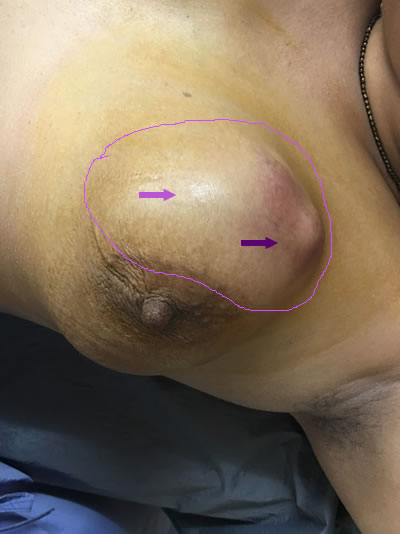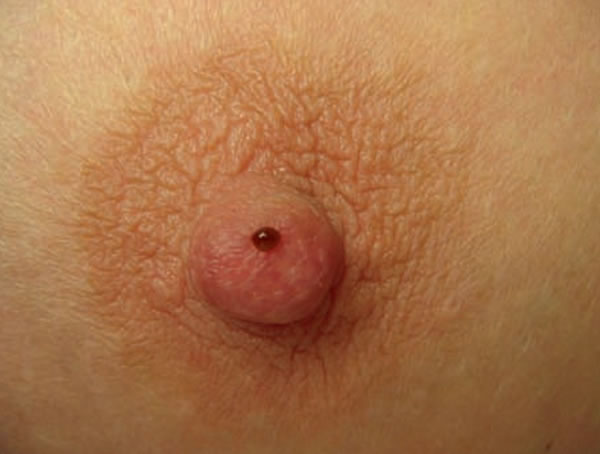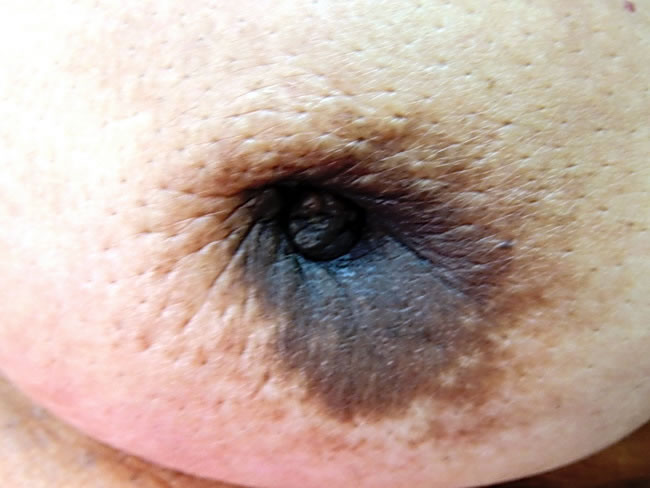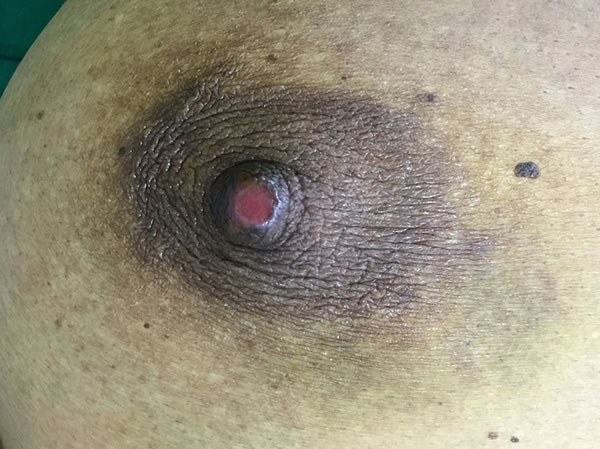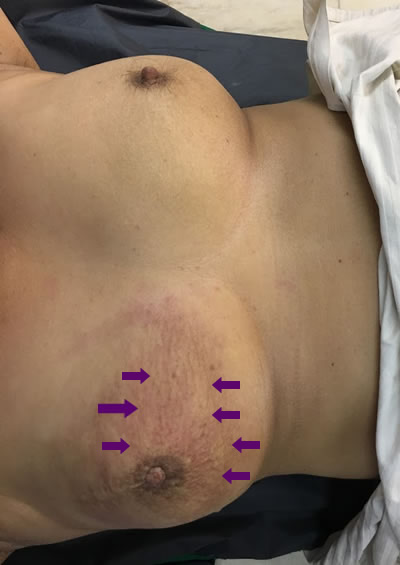What are the
symptoms of breast cancer?
A 'symptom' means, 'observing' or 'feeling' something in the body, which 'feels' abnormal - meaning, it is something which has just recently come up and was not there earlier, and does not feel normal. 'Symptoms of Breast Cancer' means, certain 'signs' which make a lady realize that something is not normal in her breast.
There are just 6 or 7 symptoms that one has to keep in mind, that's it! And keep checking for them regularly. They are as follows:
A 'Lump' or a 'Knot'
A 'Lumpish' feel
Retraction of nipple
'Bloody' or 'blood stained' nipple discharge
Thickening of skin over an area of the breast
Lumps in the armpit
All the symptoms are explained in detail below.
